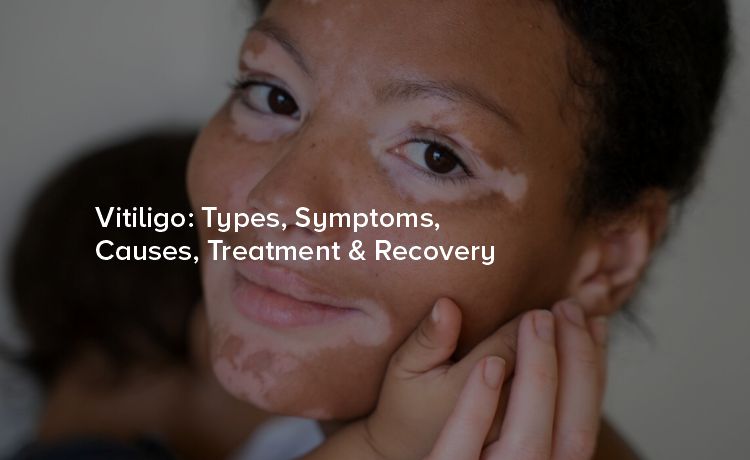
Vitiligo is a long-term skin condition that has puzzled medical professionals and researchers alike for many years. Characterized by patches of skin losing their pigment, vitiligo can significantly impact an individual's appearance and, subsequently, their psychological well-being.
Vitiligo is a condition that causes depigmentation of the skin. The skin loses its natural color because melanocytes—the cells responsible for producing melanin—are destroyed. This results in white patches appearing on various parts of the body. Though it can affect anyone, vitiligo is more noticeable in individuals with darker skin tones.
Vitiligo can be classified into several types based on how and where the depigmentation occurs:
1. Generalized Vitiligo
The most common form, generalized vitiligo, presents as widespread patches across different parts of the body. These patches are often symmetrical.
2. Segmental Vitiligo
Segmental vitiligo is less common and tends to affect one side or part of the body. It usually starts at a young age and progresses for a few years before stabilizing.
3. Focal Vitiligo
This type involves one or a few areas of depigmentation and does not spread as widely as generalized vitiligo.
4. Acrofacial Vitiligo
Acrofacial vitiligo affects the extremities and facial areas, such as fingers, toes, and around the mouth and eyes.
1. White Patches
The primary symptom of vitiligo is the appearance of white patches on the skin. These patches can vary in size and may merge over time.
2. Premature Graying
Some people may experience premature graying of the hair on their scalp, eyebrows, eyelashes, or beard.
3. Color Loss in Tissues
Vitiligo can also affect the mucous membranes, leading to depigmentation inside the mouth and nose.
4. Eye Color Changes
In some cases, vitiligo can alter the color of the retina, although this is less common.
The exact cause of vitiligo remains unknown, but several factors may contribute to its development:
1. Autoimmune Disorders
Many experts believe that vitiligo is an autoimmune condition, where the immune system mistakenly attacks melanocytes.
2. Genetic Factors
There is evidence to suggest that genetics play a role in the predisposition to vitiligo. It often runs in families, though the inheritance pattern is complex.
3. Environmental Triggers
Exposure to certain chemicals, stress, or sunburn may trigger vitiligo in people who are genetically predisposed to the condition.
4. Neurogenic Factors
Some researchers think that nerve endings in the skin may release a chemical that destroys melanocytes.
While there is no cure for vitiligo, various treatments can help manage the condition and improve the appearance of the skin:
1. Topical Steroids
Topical corticosteroids may help repigment the skin, particularly if applied in the early stages of the disease.
2. Topical Calcineurin Inhibitors
These immunomodulators, such as tacrolimus and pimecrolimus, can be effective in treating small areas of depigmented skin.
3. Phototherapy
Narrowband ultraviolet B (NB-UVB) therapy is commonly used to treat vitiligo. It involves exposing the skin to UVB light to stimulate melanocyte production.
4. Excimer Laser
This targeted form of phototherapy uses a specific wavelength of UVB light to treat localized areas of vitiligo.
5. Depigmentation
For those with extensive vitiligo, depigmentation of the remaining pigmented skin may be an option to create a more uniform appearance.
6. Surgical Therapies
Techniques such as skin grafting, blister grafting, and cellular grafting can be used to transplant healthy melanocytes to affected areas.
7. Cosmetic Cover-Ups
Makeup and self-tanning products can help camouflage white patches, offering a non-invasive option for those who prefer it.
8. Psychological Support
Given the emotional impact of vitiligo, psychological support and counseling are essential components of a comprehensive treatment plan.
Managing vitiligo involves both medical treatment and lifestyle adjustments. Here are some tips for living with the condition:
1. Sun Protection
Use broad-spectrum sunscreens with high SPF to protect depigmented skin, which is more susceptible to sunburn.
2. Healthy Diet
Though no specific diet can cure vitiligo, maintaining overall health may support treatment efforts.
3. Stress Management
Since stress can exacerbate vitiligo symptoms, finding effective stress management techniques is crucial.
4. Regular Follow-Ups
Routine check-ups with a dermatologist can help monitor the condition and adjust treatment plans as needed.
While vitiligo poses unique challenges, understanding its types, symptoms, causes, and treatment options can empower those affected to manage the condition effectively. Citizens Specialty Hospital offers the best dermatology treatment in Hyderabad.